June 19, 2025 | 15:24 GMT +7
June 19, 2025 | 15:24 GMT +7
Hotline: 0913.378.918
June 19, 2025 | 15:24 GMT +7
Hotline: 0913.378.918
It is Deputy Director of Crops Production Deparment Le Thanh Tung’s proposal when it comes to the cultivation for winter-spring crop 2021-2022 in Mekong Delta provinces amidst the soaring of fertilizer prices.
As mentioned by Tung, the winter-spring crop 2021-2022 in Mekong Delta is facing four big challenges. According to the forecast of Directorate of Water Resources, the Mekong River's water source to the Mekong Delta is lower than the average for many years, the shortage is equivalent to the dry season in 2015-2016. The drought situation will be earlier, deeper intrusion and higher rate in the rice production areas of the Mekong Delta provinces.
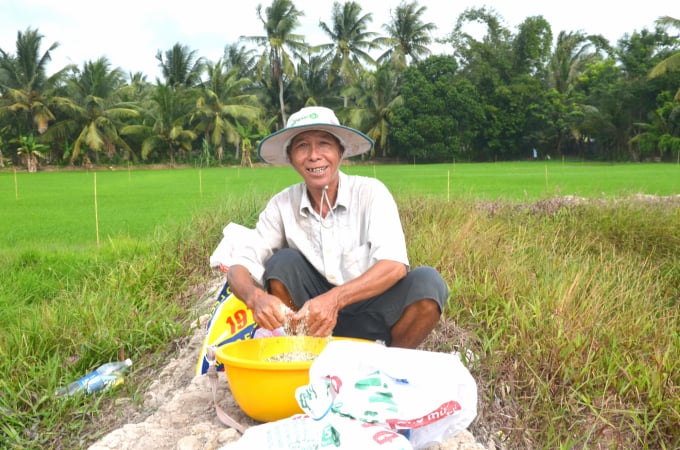
Rising fertilizer prices are putting great pressure on the 2021-2022 winter-spring crop. Photo: Minh Dam.
Besides, in the last 6 months, fertilizer prices have increased very high, some fertilizers have increased by 100%. Specifically, the price of Urea fertilizer was VND 16,000/kg, while in the same period last year it was only about VND 6,700/kg. Therefore, pressure from fertilizer costs is weighing on production.
Fertilizer costs usually account for 21-24% of the cost structure of rice production. In particular, in the autumn-winter crop of 2021, the high price of fertilizer makes fertilizer costs account for 30% of the cost of rice production.
In addition, the Covid-19 pandemic caused traffic delays in the circulation of agricultural supplies. Difficulties are not only in manufacturing plants but also at retailers. This makes the problem of fertilizers and supplies more and more difficult.
The fourth problem, when harvesting winter and spring rice, the issue of selling prices and consumption has not been forecasted yet.
As recommended by Tung, to addresss the challenges on water resources, the drought risk in the winter-spring crop 2021-2022, MARD built a map of risks and plan for adaptability.
In October, farmers in coastal provinces will sow about 400,000 hectares of winter and spring 2021-2022 crop. When the drought situation can be as severe as that of 2019-2020, the provinces will combine completed works such as Vung Liem, Bong Bot, Tan Dinh, Cai Be ..., a number of sluices to prevent salinity to regulate water sources.

Mr. Le Thanh Tung, Deputy Director of the Department of Crop Production recommended a 50% reduction in the amount of fertilizer for the coming winter-spring crop. Photo: Minh Dam.
According to the Ministry of Agriculture and Rural Development, in October, the coastal provinces of the Mekong Delta will sow about 400,000 hectares of winter-spring rice crop.
Fertilizer demand during this period is about 30 - 36 thousand tons of Urea, 27 - 32 thousand tons of DAP and 10 - 12.5 thousand tons of potassium.
Regarding Covid-19 pandemic, the Mekong Delta provinces have also gradually overcome the hardship. However, the problem of fertilizer prices is extremely difficult. If farmers reduce fertilizer by 10%, water for irrigation, etc., they can only reduce the price by VND 100-200/kg. Now, the price of fertilizer has doubled, nearly tripled, even if it is reduced by 10%, it will not meet the demands for profit of farmers.
Besides, Mr. Le Thanh Tung also suggested that farmers can even reduce the amount of fertilizer up to 70%.
Mr. Tung also recommended that farmers should consider the level of
investment, the profit will be earned to calculate and solve the problem of fertilizer costs in the winter-spring crop 2021 - 2022 in the same way.
Besides, if localities consider growth targets and output of this winter-spring crop, they can overcome difficulties caused by pressure from high fertilizer prices.
“I think if vigorously applying this fertilizer reduction effectively in a small area, maybe it will spread to a large area. If we can do that for 1 million 550 thousand hectares of rice cultivation in the Mekong Delta, then the pressure on fertilizer for the Mekong Delta will no longer be, "said Mr. Le Thanh Tung.
Indeed, in the last autumn-winter crop of 2021, farmer Do Hoa Hiep in Vinh Thanh district, Can Tho city applied the integrated pest management (IPM) process, "3 decrease 3 increase" of the MARD combining with the Bayer Company's 3N2A process, was twice as profitable as the average for many other farmers. Besides, Mr. Hiep also reduced the amount of fertilizer by 50%, as well as production costs.
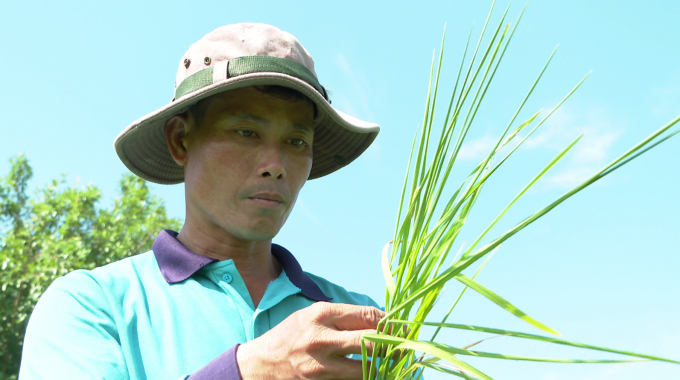
Farmer Do Hoa Hiep reduced fertilizer by 50% but his profit did not decrease. Photo: Minh Dam.
Notably, applying the above procedures, Mr. Hiep only used 120 kg of seeds per ha. Thanks to sparse sowing, combined with fertilizing according to the rice leaf color chart, this farmer only used 23 kg of fertilizer per 1,000 m2. This level of fertilization is 50% lower than the previous method and the surrounding farmers do not apply the process.
Due to the reduced amount of fertilizer, less pest attack, combined with integrated pest management (IPM), Mr. Hiep only sprayed 3 times for the whole crop. Since then, Mr. Hiep's material cost is only about VND 847,000 for 1,000 m2. It is worth mentioning that the rice yield is still over 6 tons/ha, the profit is over VND 20 million per ha, double the average.
From the above effect, Mr. Hiep said that he will continue to apply the farming process to reduce fertilizer in the next winter-spring crop. Besides, many farmers around Mr. Hiep have also follow the model.
And Mr. Nguyen Van Viet, director of My Thanh Bac Cooperative (Cai Lay district, Tien Giang province) said: Currently, the price of urea has doubled year on year. With the rapid increase in fertilizer prices like this, it is expected that the cost of rice production in the next winter-spring crop will increase. Therefore, the cooperative will propagate to farmers to choose light-fertilized, sparsely planted varieties to reduce costs.
Also according to Mr. Vo Van Viet's share, the winter-spring crop usually has few pests and diseases. The amount of fertilizer for the winter-spring crop is expected to range from 350-400 kg/ha, so farmers are also relieved. In addition, select high-quality rice varieties to sell at a higher price. It is projected in the 2021 - 2022 winter-spring crop, My Thanh Bac Cooperative will sow the seeds of Dai Thom 8 and OM 18.
My Thanh Bac Cooperative has just harvested 400 hectares of autumn-winter rice. In this rice crop, the cooperative sowed two rice varieties OM 5451 and OM 18. Thanks to scientific and technical advances from the Sustainable Agricultural Transformation Project (VnSAT), the cooperative has applied many measures to reduce production costs such as: sparse sowing, smart fertilizer, using transplanters..., the profit brought to members is nearly twice as much as the province's average.
Translated by Linh Linh
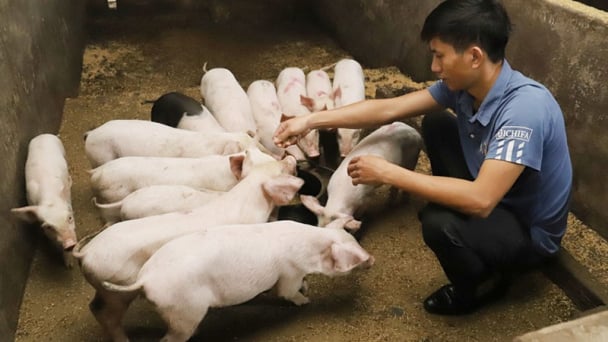
(VAN) Proactively using vaccines, combined with transport control and enhanced surveillance, is the only viable path toward biosecure and sustainable livestock production in Vietnam.

(VAN) Located in the southeast of Ho Chi Minh City, the Can Gio Mangrove Biosphere Reserve is considered the ‘green lung,’ a solid shield protecting the city.
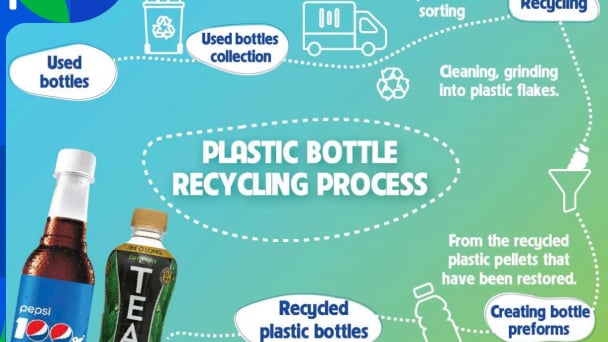
(VAN) To address plastic pollution, closing the plastic recycling cycle will bring significant economic and environmental benefits.
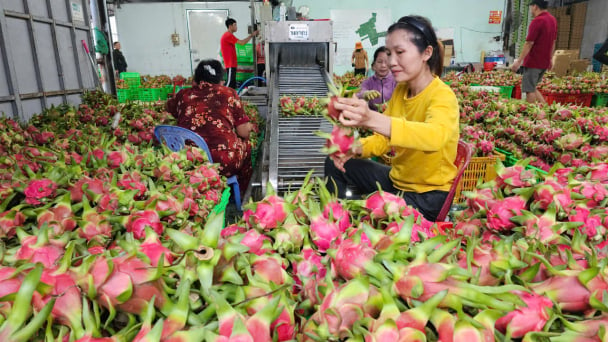
(VAN) According to the Binh Thuan Department of Industry and Trade, in the first five months of 2025, Binh Thuan's dragon fruit export turnover increased by 20.65% compared to the same period last year.
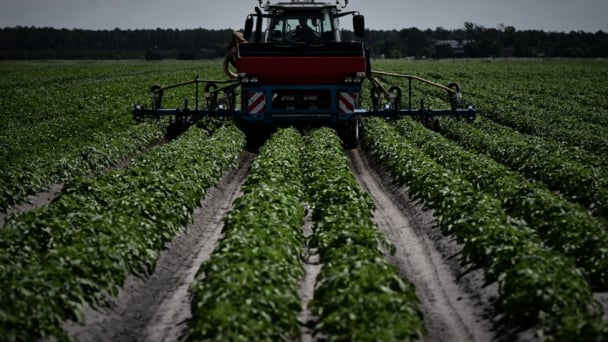
(VAN) EU countries on Thursday gave final approval to new tariffs on fertilizer imports from Russia, a move aimed at cutting off revenue that could support Moscow’s war in Ukraine, despite concerns from European farmers.

(VAN) The working delegation from the Ministry of Agriculture and Environment conducted an important trip to the Netherlands to strengthen strategic partnerships and sustainable development in the agricultural sector.

(VAN) The letter ‘A Plea from the Ocean’ not only evokes emotion but also awakens the human conscience to the responsibility of protecting life on Earth.